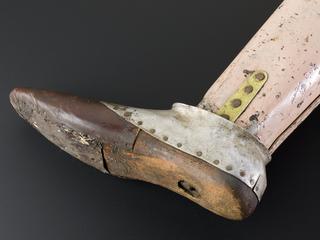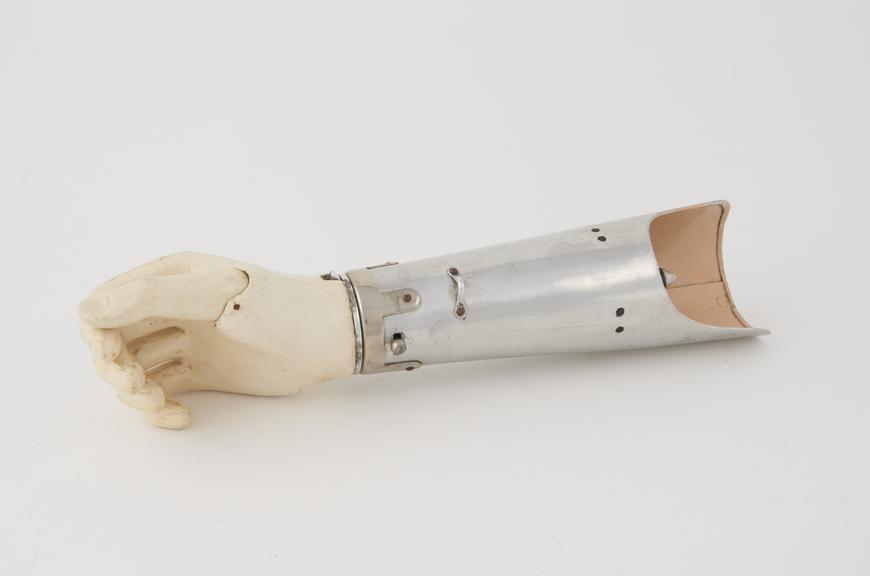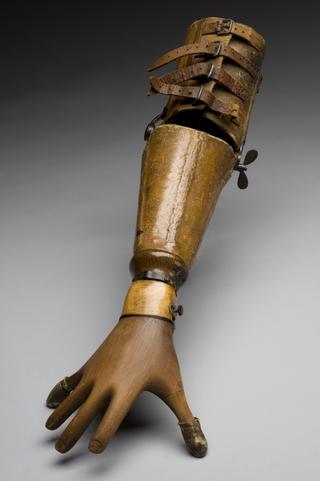
Artificial arm with hook and forearm attachments, c.1924-1930.
- Made:
- 1924-1930

This is a detachable aluminium forearm with a wrist rotary and a metal guide loop for the operating cord. Designed to fit onto a blocked leather socket supplied with heavy-duty webbing appendage straps. Short forearm stem (for mechanical advantage when lifting). Splined terminal fitment, necessary for heavy duty tools. A long plain hook is attached. The elbow lock (which may be engaged in one of seven positions) is manually operated by means of a small lever set on the medial side of the forearm, just below the joint. The forearm release lever is set on the lateral side of the stem. Made by McKay, used during 1924-34 period.
Artificial arm made for use in heavy duty work. It was designed for an above-the-elbow amputee and is seen here with a long plain hook attachment, which could be replaced with other tools or with the aluminium forearm shown alongside it. The hand is made of light-weight certalmid. This combination of certus glue, muslin and celluloid was devised for making upper and lower limb sockets during World War I and was used for many years afterwards. Made by Mckay, c.1924-1930
Details
- Category:
- Orthopaedics
- Object Number:
- 1999-541
- type:
- medicine, artificial limbs, artificial arms, prostheses and disability
- credit:
- Richmond Twickenham and Roehampton Healthcare NHS Trust




